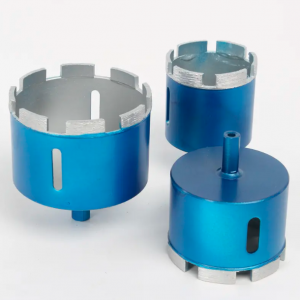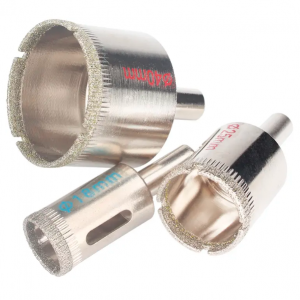When cutting hard materials like ceramic, glass or tile, standard drills may not be able to get the job done effectively. This is where the diamond hole saw comes into play. With their sturdy construction and diamond-grit-coated edges, these specialty tools enable DIYers and professionals to achieve precise, clean cuts. In this comprehensive guide, we explore everything you need to know about diamond hole saws and how to get the most out of them.
Learn about diamond hole saws:
Diamond hole saws are cylindrical cutting tools specifically designed to drill through hard materials. They consist of a steel body with industrial grade diamond grit evenly distributed around its edges. The diamond particles form a sharp cutting edge that can easily and effectively cut through a variety of materials without excessive damage or fracture.
Choosing the Right Diamond Hole Saw:
To maximize the cutting efficiency and durability of your diamond hole saw, selecting the correct tool for your specific application is critical. Consider the following factors when choosing a diamond hole saw:
1. Material Compatibility: Make sure the diamond hole saw is suitable for the material you are cutting. Different hole saws are optimized for specific materials such as glass, porcelain or granite.
2. Size and Depth: Determine the desired diameter and depth of the hole you need to create and choose a diamond hole saw that meets these requirements.
3. Quality and Brand: Choose a reputable brand that offers high quality diamond hole saws. These tools tend to have superior diamond grit adhesion and longer life, providing better value for your investment.
Effective use of diamond hole saws:
To achieve precise, clean cuts with a diamond hole saw, consider the following tips:
1. Safety precautions: Always wear goggles, a dust mask, and gloves to prevent possible flying debris and inhalation of dust particles.
2. Marking and Positioning: Use a template, a level, or a tape measure to mark the exact location where the hole will be created. Hold the workpiece securely to avoid slipping or vibration during cutting.
3. Lubrication: Apply a generous amount of water to the surface being cut. This helps reduce heat and friction, preventing premature wear of the diamond grit and prolonging the life of the tool.
4. Gentle pressure and steady speed: Apply consistent but gentle pressure while maintaining a steady drilling speed. Let the diamond grit do the cutting work and avoid forcing the hole saw through the material.
5. Clear large pieces: Periodically back out the hole saw to remove excess debris and allow the water to effectively lubricate the cutting surface.
in conclusion:
A diamond hole saw is an essential tool when it comes to achieving precise, clean cuts in hard materials. By choosing the right hole saw and following recommended techniques, you can maximize its performance and extend its life. Remember to prioritize safety and proper lubrication during the project. With practice and attention to detail, you'll master the art of using a diamond hole saw and take your DIY projects to the next level. Happy cutting!
Post time: Aug-01-2023


